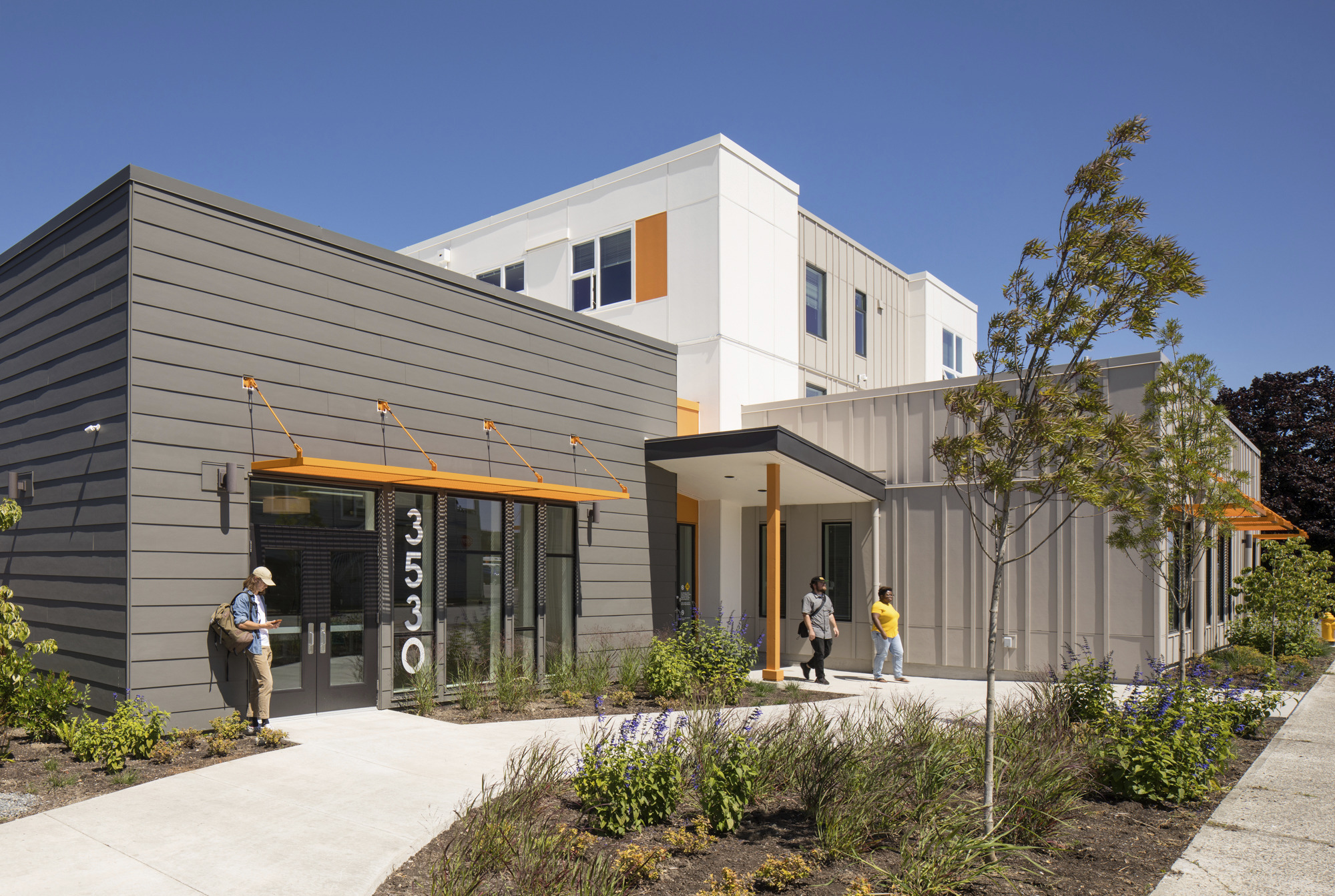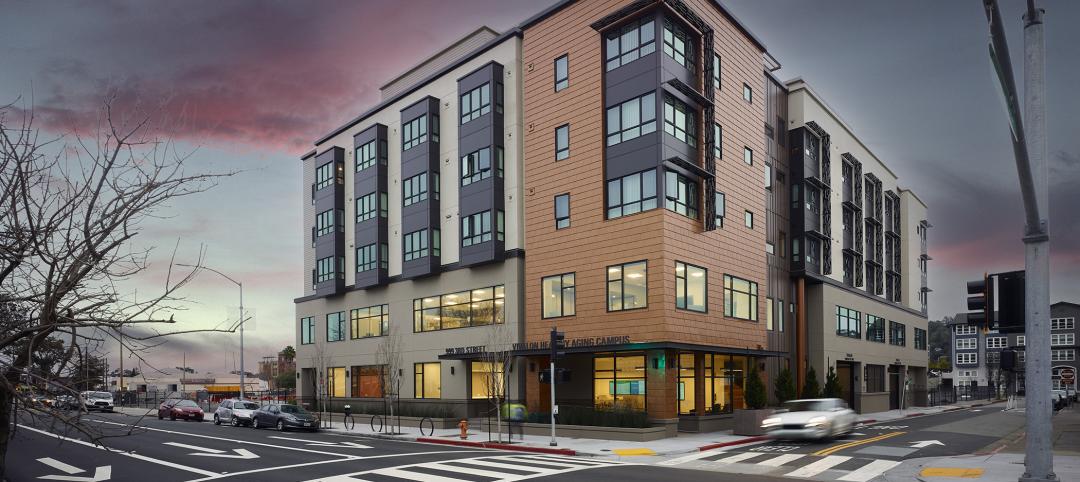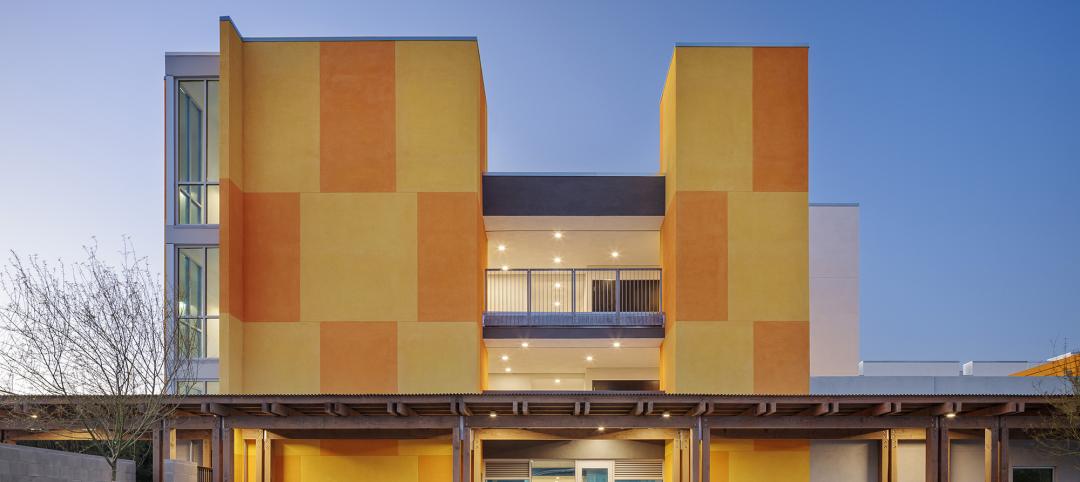Recently, while commuting past a tent community on my way to work, I was reminded that a medium- to large-sized city in the U.S. today without a homelessness problem is a rarity. In my home city of Seattle, for example, we need tens of thousands of new affordable units per year to keep up with population growth, which city officials expect to hit one million people by 2044.
As an architect who has focused on designing affordable housing developments in Seattle, Los Angeles, and Boise for more than 25 years, I know firsthand achieving these projects is complicated and requires the combined resources of developers, contractors, architects, engineers, and judicial plan reviewers, as well as a range of public and private funding sources. It also takes a huge amount of collective will.
In the face of this challenge, there is one simple but extremely powerful way to address the “problem” of affordable housing. We can change the language we use to describe housing and actively shift it to be more inclusive. The descriptor “essential housing” allows for that framework. While “affordable housing” often conjures associations with government handouts and helping those who cannot, for whatever reason, help themselves, the reality is there are huge swaths of our population for whom housing costs are prohibitive. They are our teachers, baristas, firefighters, nurses, and many other essential workers. For many in our communities, rising rents and increased demand for housing means they are only one paycheck away from being unhoused.
It’s time to stop thinking of affordable housing as a handout which is someone else’s problem to solve and start calling it what it is: Essential Housing, a crucial component of a thriving local community.
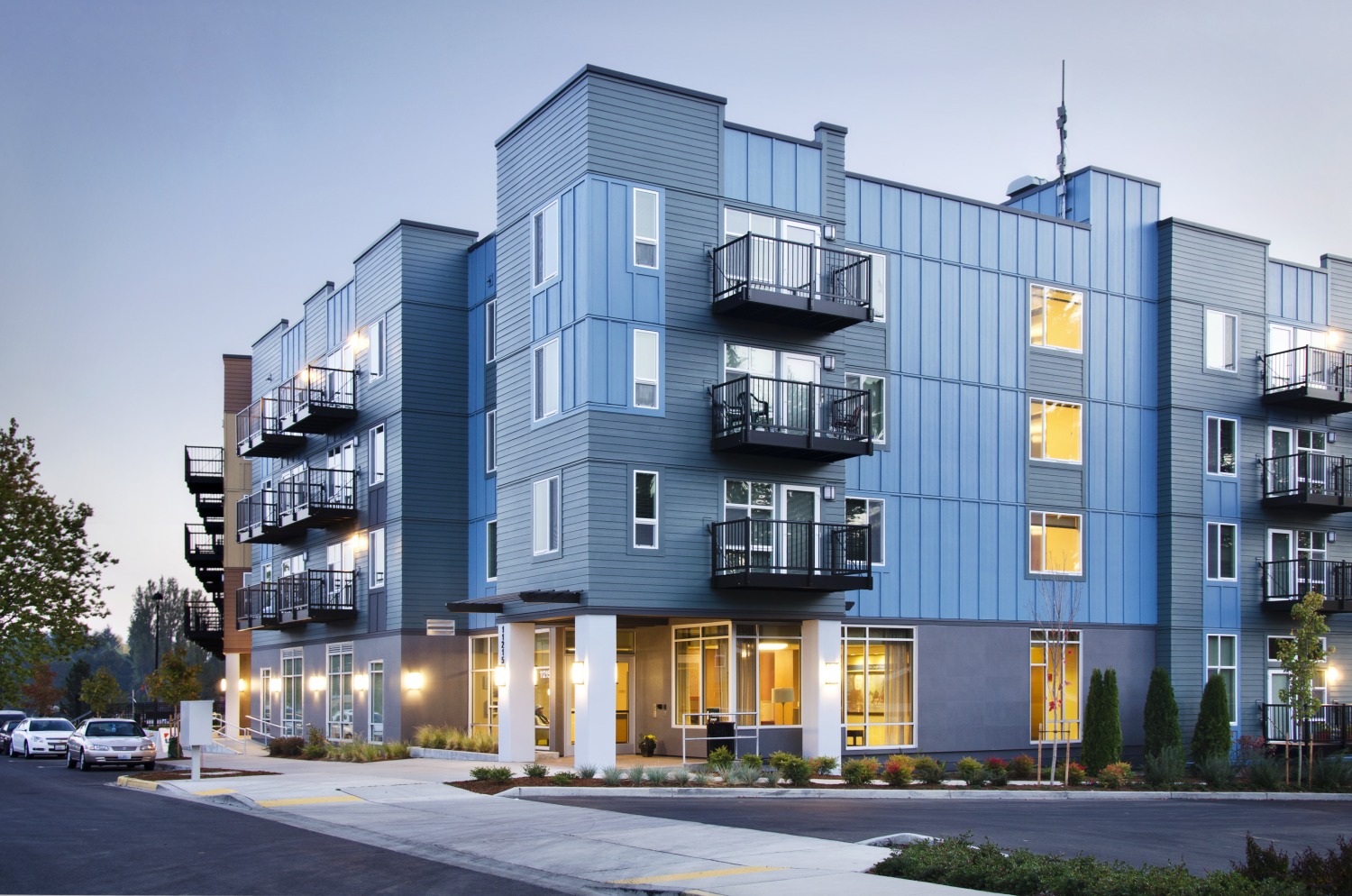
Essential housing is a collective endeavor
When we reframe housing as something essential to communities, many more possible solutions come to light. There are numerous connections between stable housing and other elements of community life such as wellness, faith, and public safety, and looking at housing through these lenses reveals new opportunities to tackle the issue.
Framing Essential Housing through the lens of healthcare reveals the link between stable housing and healthy community members. Anyone living unhoused, or in substandard living conditions, is at a greater risk for negative health impacts, and many mental health issues can only be solved after obtaining permanent housing. Understanding housing as essential to a healthy community means there are opportunities to direct medical investments toward the endemic housing shortage. At GGLO, our design for Providence Joseph House in south Seattle is a successful example of how healthcare companies—in this case, Washington-based Providence Health & Services—can direct resources towards bolstering the housing supply.
Looking at Essential Housing through a faith-based framework, we see the connection between stable housing and the necessary support services often offered by religious or mission-based entities. There are many examples of churches, synagogues, and temples using their available space to build much needed housing developments, including GGLO’s recently completed Cocoon House. This development provides 40 units of housing alongside support services for at-risk youth in Snohomish County, Wash., on the site of a former church.
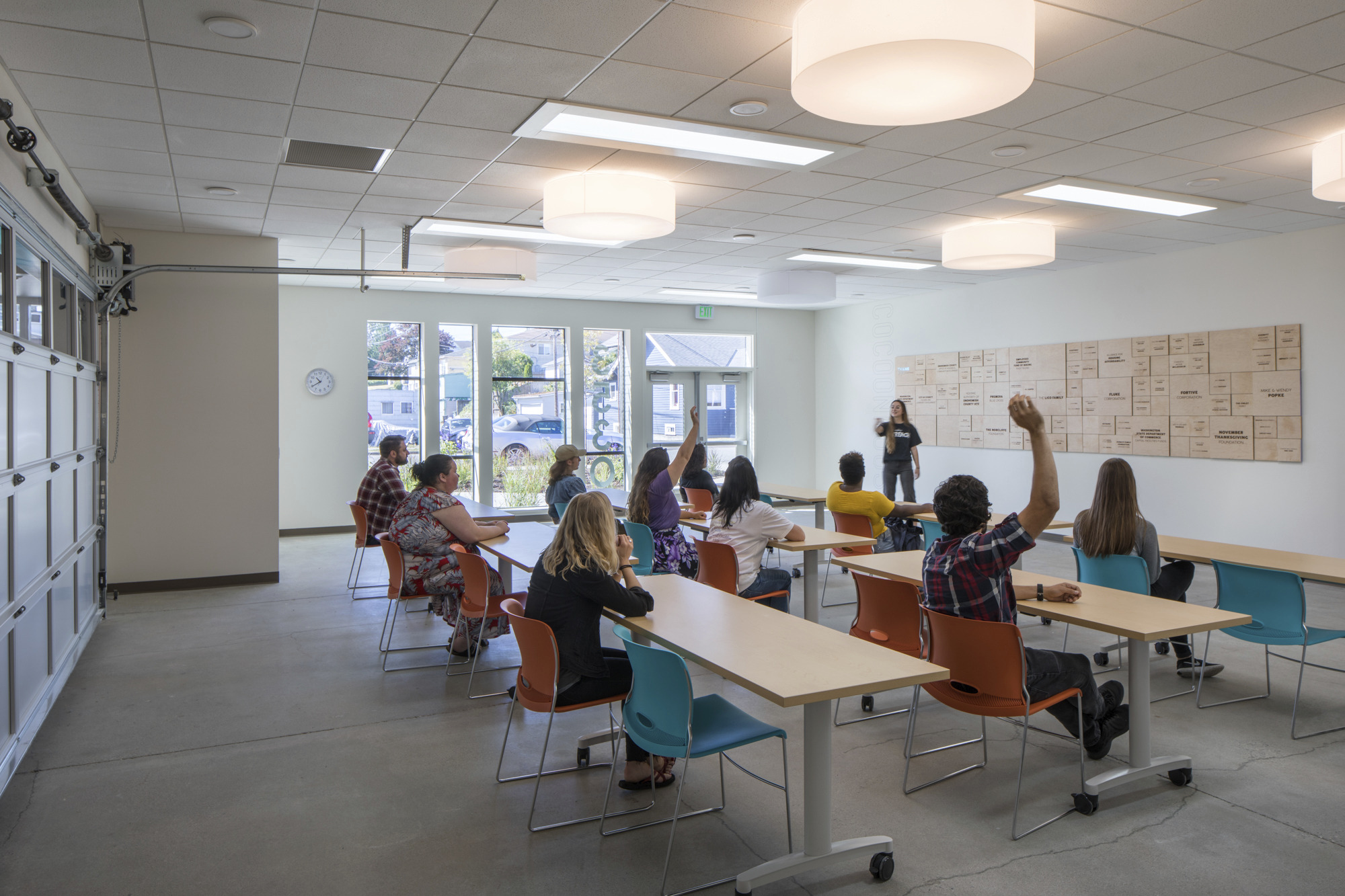
Understanding housing as an essential aspect of ensuring public safety asks us to treat the issue with more urgency. We hear proclamations of local, regional, and statewide housing emergencies year after year, yet we see the challenge continue to grow with little resistance. If we can act with a similar haste to public health emergencies like the COVID-19 pandemic, or to a flood, fire, or earthquake, we can make a meaningful impact.
Design solutions
Although the housing challenge is massive and impacts all aspects of community life, there is not a one-size-fits-all approach to solving it. The strategies must be as varied as the stories of those facing a lack of housing. It is truly not possible to create enough housing through traditional means; reframing the issue as essential can help drive a new sense of urgency and an all-hands approach to developing new solutions.
We are seeing great strides in modular and manufactured housing to speed up the production of this essential resource. Whether a full living unit, or a kit of parts that can be componentized and rapidly assembled, these strategies can rapidly create new shelter. Individual Tiny Homes provides rapid shelter, and multi-story buildings built from factory components can provide permanent stable homes on an expedited timeline.
Rezoning and densifying land for housing is rapidly occurring in cities like Seattle, Boise, and beyond. Former malls and retail centers are being adapted to housing, including Seattle’s Northgate Mall and Lynnwood’s Alderwood Mall, which GGLO is working to convert to transit-oriented redevelopments by creating new housing to complement existing retail infrastructure.
Converting existing vacant office buildings into residential is also seeing an increased opportunity, as evidenced by GGLO’s current Alloy at Midtown project in Phoenix, Ariz. This development takes advantage of the existing infrastructure to create housing at greater speed than new construction. We must match increasingly vacant office space to the huge housing needs across our communities.

Always, we must remember the importance of an inclusive and community-centered process where integrated teams of designers, builders, operators, and users come together to plan buildings that address the unique needs of the communities where they are situated. Essential Housing requires new advocacy and creativity around the design and development process. Encouraging innovation and speed in permitting and jurisdictional processes, while still maintaining public health and safety, is imperative.
While much of this can feel overwhelming, it is possible if we come together as communities to address these pressing housing challenges. Changing the narrative to reframe housing as essential is a first step. Through the power of language, we can tap into our collective willpower and, hopefully, pool our energy and resources to build a better future.
Related Stories
Multifamily Housing | Jun 3, 2024
Grassroots groups becoming a force in housing advocacy
A growing movement of grassroots organizing to support new housing construction is having an impact in city halls across the country. Fed up with high housing costs and the commonly hostile reception to new housing proposals, advocacy groups have sprung up in many communities to attend public meetings to speak in support of developments.
Affordable Housing | May 30, 2024
General contractor’s keys to a successful affordable housing project
General contractors can have tremendous influence over a project’s success in terms of schedule, budget, and quality. However, to ensure a project is put on this path, there are a few factors that must be considered.
MFPRO+ News | May 28, 2024
ENERGY STAR NextGen Certification for New Homes and Apartments launched
The U.S. Environmental Protection Agency recently launched ENERGY STAR NextGen Certified Homes and Apartments, a voluntary certification program for new residential buildings. The program will increase national energy and emissions savings by accelerating the building industry’s adoption of advanced, energy-efficient technologies, according to an EPA news release.
MFPRO+ News | May 21, 2024
Massachusetts governor launches advocacy group to push for more housing
Massachusetts’ Gov. Maura Healey and Lt. Gov. Kim Driscoll have taken the unusual step of setting up a nonprofit to advocate for pro-housing efforts at the local level. One Commonwealth Inc., will work to provide political and financial support for local housing initiatives, a key pillar of the governor’s agenda.
Senior Living Design | May 16, 2024
Healthy senior living campus ‘redefines the experience of aging’
MBH Architects, in collaboration with Eden Housing and Van Meter Williams Pollack LLP, announces the completion of Vivalon’s Healthy Aging Campus, a forward-looking project designed to redefine the experience of aging in Marin County.
Affordable Housing | May 14, 2024
Brooklyn's colorful new affordable housing project includes retail, public spaces
A new affordable housing development located in the fastest growing section of Brooklyn, N.Y., where over half the population lives below the poverty line, transformed a long vacant lot into a community asset. The Van Sinderen Plaza project consists of a newly constructed pair of seven-story buildings totaling 193,665 sf, including 130 affordable units.
Mass Timber | May 8, 2024
Portland's Timberview VIII mass timber multifamily development will offer more than 100 affordable units
An eight-story, 72,000-sf mass timber apartment building in Portland, Ore., topped out this winter and will soon offer over 100 affordable units. The structure is the tallest affordable housing mass timber building and the first Type IV-C affordable housing building in the city.
Senior Living Design | May 7, 2024
Living community opens for seniors seeking affordable housing
San Diego-based nonprofit affordable housing developer Community HousingWorks (CHW) celebrates the opening of Puesta del Sol Apartments, a new development with 59 apartments for adults 55 years and older.
MFPRO+ Special Reports | May 6, 2024
Top 10 trends in affordable housing
Among affordable housing developers today, there’s one commonality tying projects together: uncertainty. AEC firms share their latest insights and philosophies on the future of affordable housing in BD+C's 2023 Multifamily Annual Report.
MFPRO+ News | Apr 29, 2024
World’s largest 3D printer could create entire neighborhoods
The University of Maine recently unveiled the world’s largest 3D printer said to be able to create entire neighborhoods. The machine is four times larger than a preceding model that was first tested in 2019. The older model was used to create a 600 sf single-family home made of recyclable wood fiber and bio-resin materials.



